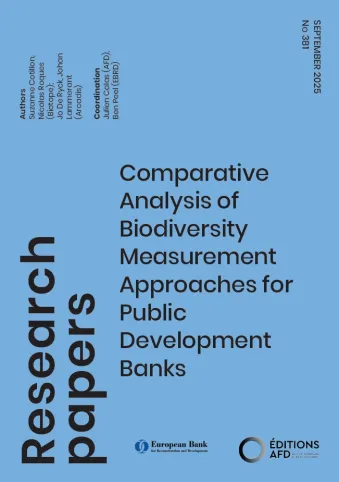Share the page
Comparative analysis of biodiversity measurement approaches for public development banks
Published on

Biodiversity loss is a major global challenge, pushing public development banks (PDBs) to align with frameworks such as the GBF, TNFD, and CSRD. To support this, AFD and EBRD assessed six biodiversity measurement tools across investment cases in energy, infrastructure, agriculture, and water worldwide. The study tested how tools can be applied throughout the investment cycle, from project screening to portfolio reporting. Findings show that while tools can deliver meaningful insights, their use is limited by scarce and uneven project data. Time and reporting constraints often force reliance on sectoral averages rather than site-specific inputs, reducing precision. STAR and ABC-Map provide spatially detailed results suitable for locating biodiversity hotspots, though they require rich geospatial data. GBS, CBF, and BioScope are more effective at portfolio level, while ENCORE serves to screen ecosystem service dependencies. However, differences in metrics, units, and classifications complicate comparisons, and some pro-nature impacts (e.g. sustainable agriculture, forestry, anti-poaching) are poorly captured. Despite these limits, tools are valuable for early risk screening and aligning finance with nature-positive goals. No single tool meets all needs, but a combined, tiered approach—tailored to project type, data, and disclosure requirements—can add value. PDBs should strengthen data protocols, build internal capacity, and foster peer learning to institutionalize biodiversity measurement and embed nature into sustainable development strategies.
Useful Information
-
Authors
-
Suzanne COTILLON, Nicolas ROQUES, Kim DRIESEN, Jo DE RYCK, Johan LAMMERANT, Ben PEEL
-
Coordinators
-
Edition
-
381
-
Number of pages
-
54
-
ISSN
-
2492 - 2846
-
Collection
-
Research Papers
-
Languages
-
English
